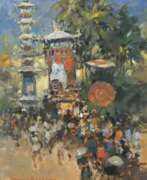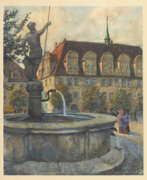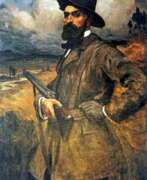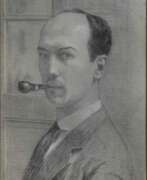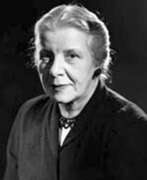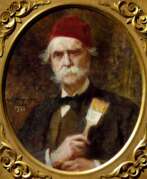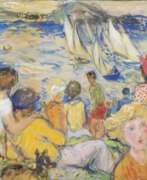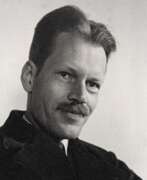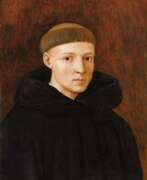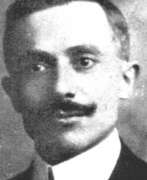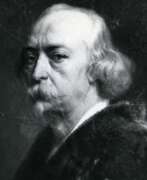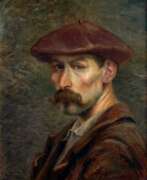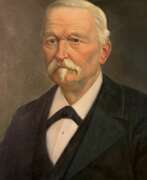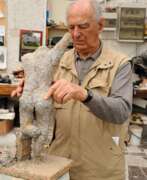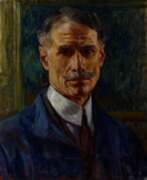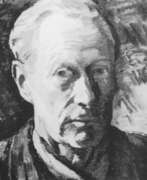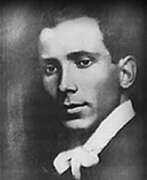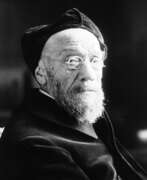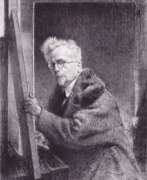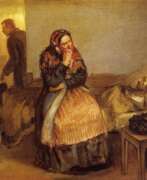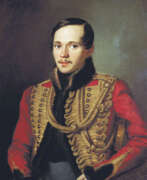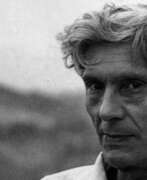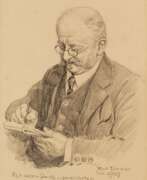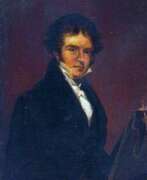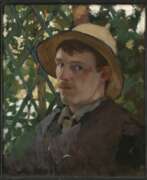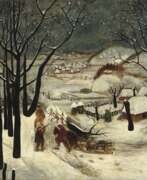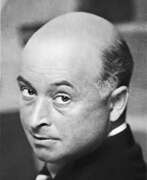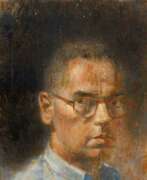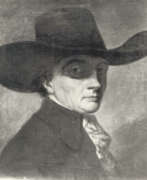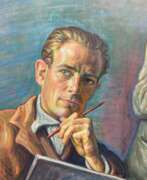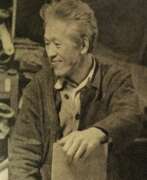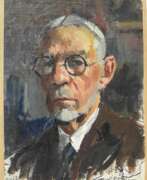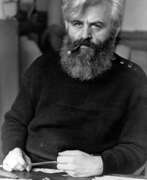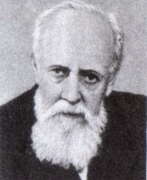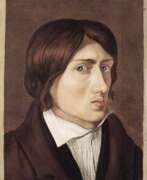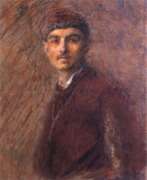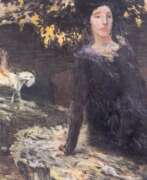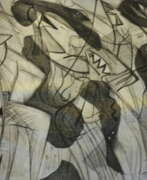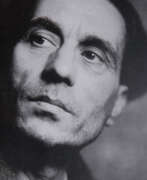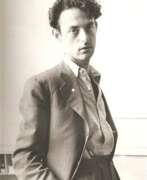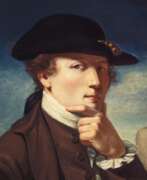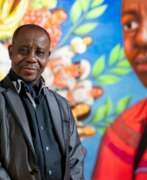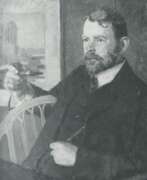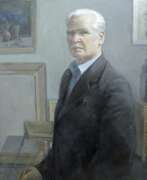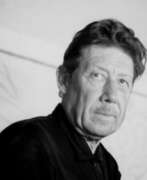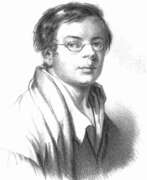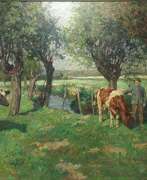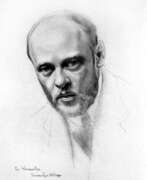Illustrators Self-portrait
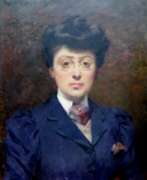

Louise Abbéma was a French painter, sculptor, and designer, celebrated for her work during the Belle Époque. Born in Étampes in 1853 into an affluent Parisian family, she became well known for her portraits, particularly of the famous actress Sarah Bernhardt, and for decorative panels commissioned for various public buildings in Paris and the Palace of the Governor in Dakar, Senegal.
Abbéma's art often depicted the upper echelons of French society and reflected the Impressionist style through her light and rapid brushstrokes. She was also notable for her involvement in the women's movement, where she contributed to the emerging image of the 'New Woman' by portraying androgynous figures and themes of intellectualism and freedom.
Among her many honors, Abbéma was awarded the Palme Academiques in 1887, nominated as the Official Painter of the Third Republic, and in 1906, she became a Chevalier of the Legion of Honour. Her works, such as "Lunch in the Greenhouse" and "Portrait of Sarah Bernhardt," have seen a resurgence in popularity as the contribution of women to historical art gains more recognition.
For those interested in the evocative and historically rich artworks of Louise Abbéma, consider subscribing to our updates. We'll keep you informed about new sales, auctions, and exhibitions featuring Abbéma's work, ensuring you're always connected to the latest offerings in the art and antique collectors' sphere.
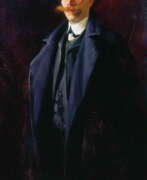

Vasiliy Vasiliyevich Belyashin (Russian: Василий Васильевич Беляшин) was a distinguished Russian and Soviet artist, acclaimed for his contributions to the Silver Age of Russian art. Born on September 8, 1874, in Vilnius, within the Russian Empire, and passing on May 8, 1929, in St. Petersburg, USSR, Belyashin's career spanned the late 19th and early 20th centuries, a period marked by significant artistic evolution. His versatility as an artist is evident in his work as a portrait painter, landscape artist, printmaker, and illustrator, with a particular renown for his series of self-portraits.
Operating mainly within the impressionist style, Belyashin's artistry was not confined to a single genre. He excelled across various forms, including landscape painting, portraits, self-portraits, and still life, showcasing a broad skill set that resonated with the Symbolist and Impressionist movements of his time. His educational background and associations with artistic societies, such as the Kuindzhi Society, the Art Community, and the Partnership of Artists, further underline his integral role in the artistic community of his era.
Though detailed records of Belyashin's works in specific museums or galleries were not immediately available, the acknowledgment of his art in auctions and the recognition by cultural institutions suggest a lasting legacy. His work, celebrated for its emotional depth and technical proficiency, continues to capture the imagination of art collectors and enthusiasts alike.
For those intrigued by Vasiliy Vasiliyevich Belyashin's unique contribution to the world of art, staying updated on auctions and exhibitions featuring his work is invaluable. Signing up for updates related to Belyashin can ensure you remain informed about new sales and auction events, offering a chance to connect more deeply with this master's artistic journey.
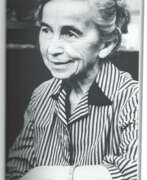

Varvara Dmitrievna Bubnova (Russian: Варвара Дмитриевна Бубнова) was a distinguished Russian painter, graphic artist, and pedagogue, celebrated for her mastery in lithography. Born into a noble family in St. Petersburg, she was deeply immersed in an atmosphere of poetry and music from an early age, which significantly influenced her artistic and intellectual development. Bubnova's education spanned from the Drawing School of the Society for the Encouragement of Arts to the St. Petersburg Academy of Arts, where she was an active member of the avant-garde group "Union of Youth" alongside prominent figures like Mayakovsky, Malevich, and Goncharova.
Her journey took a dramatic turn in 1923 when she moved to Japan, marking the beginning of a transformative period where she not only embraced Japanese art forms like suibokuga and Sumi-E ink drawing techniques but also significantly contributed to Japanese cultural life through her work and teachings. Her unique approach to art and education left a lasting impact on Japanese arts and culture. Among her notable works inspired by her experiences in Japan are "Young Violinist" (1942) and "Village Street. Japan" (1953), showcasing her fascination with Japanese life and aesthetics.
The later years of her life were spent in Sukhum, Abkhazia, where she continued to create vibrant and expressive works, demonstrating a remarkable adaptability and evolution of her artistic style throughout her life. Her works from this period, such as "Behind the Green Door" (1972), highlight her ongoing exploration of color and form. Bubnova's legacy extends beyond her artworks, as she played a crucial role in promoting Russian literature in Japan, contributing to a deeper understanding and appreciation of Russian culture among Japanese audiences.
Bubnova's artworks are part of major collections domestically and internationally, showcasing her diverse talent across various mediums and subjects. Her influence on both Russian and Japanese art scenes underscores her position as a bridge between cultures, celebrated for her artistic innovations and cross-cultural contributions.
For collectors and experts in art and antiques, Varvara Dmitrievna Bubnova's works represent a unique fusion of Russian avant-garde principles with Japanese artistic traditions, making her a fascinating figure whose pieces are a testament to a life spent transcending cultural boundaries. To stay updated on new sales and auction events related to Varvara Dmitrievna Bubnova's works, sign up for updates and immerse yourself in the legacy of this extraordinary artist who effortlessly blended the best of two worlds.
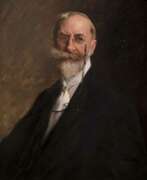

William Merritt Chase was an American painter, celebrated for his role in establishing Impressionism in America and his profound influence as an art educator. Born on November 1, 1849, in Indiana, Chase became a pivotal figure in American art, blending Impressionist and Realist styles with a distinctive flair that captured both cityscapes and intimate studio settings. His mastery of oil, pastel, and watercolor allowed him to create works renowned for their vibrancy and expressiveness.
Chase's career was notably marked by his transformation of studio environments into aesthetic showplaces, making them centers of social gatherings that enhanced his stature in the art community. His tenure at the Shinnecock Hills Summer School and his travels in Europe, especially his interactions with European artists, were crucial in shaping his artistic direction. Notably, his exposure to French Impressionism through exhibitions in New York profoundly influenced his style, integrating lighter palettes and freer brushwork which became evident in his landscapes and portraits.
Chase's works are celebrated for their innovative use of color and composition, qualities that made him a leading figure in American Impressionism. His notable works include scenes of everyday leisure, portraits, and vibrant landscapes, capturing the essence of his era with elegance and sophistication.
If you are intrigued by the artistic journey and impact of William Merritt Chase, consider signing up for updates. This subscription will keep you informed about new sales, upcoming auctions, and events related to his works. Stay connected with the vibrant world of William Merritt Chase and enhance your collection with knowledge and opportunities. Sign up today!
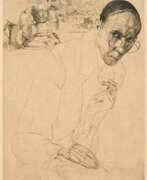

Jules De Bruycker, a Belgian graphic artist and etcher, is renowned for his depictions of Ghent, cathedrals, war scenes, and book illustrations. He achieved technical virtuosity in his prints and was considered one of Belgium's greatest etchers. His work showcased crowds and dramatic lighting, providing an intimate view of daily life in Ghent. De Bruycker's influences ranged from Flemish traditions to artists like Brueghel, Bosch, and Ensor. His later work included prints of cathedrals, figure studies, and sensuous nudes. De Bruycker's art greatly influenced his contemporaries, including Gustave van de Woestijne.
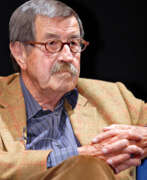

Günter Wilhelm Grass was a German novelist, poet, playwright, illustrator, graphic artist, sculptor, and recipient of the 1999 Nobel Prize in Literature.
Grass is best known for his first novel, The Tin Drum (1959), a key text in European magic realism. It was the first book of his Danzig Trilogy, the other two being Cat and Mouse and Dog Years. His works are frequently considered to have a left-wing political dimension, and Grass was an active supporter of the Social Democratic Party of Germany (SPD). The Tin Drum was adapted as a film of the same name, which won both the 1979 Palme d'Or and the Academy Award for Best Foreign Language Film. In 1999, the Swedish Academy awarded him the Nobel Prize in Literature, praising him as a writer "whose frolicsome black fables portray the forgotten face of history".
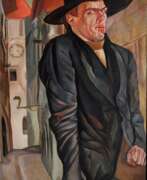

Boris Grigoriev (Russian: Бори́с Дми́триевич Григо́рьев), a Russian artist born in 1886, gained fame for his multifaceted talents as a painter, graphic artist, and writer. His works are celebrated for capturing the essence of rural Russian life and the country's Bohemian artistic circles, including figures like Anna Akhmatova and Velimir Khlebnikov. His series "Russia" (Raseya), created between 1916 and 1918, is particularly noted for its poignant depiction of Russian peasants, earning praise for revealing the true spirit of pre-revolutionary Russia. Grigoriev's international journey took him across Europe and the Americas, where he continued to paint, influenced by the likes of Paul Cézanne. Despite his global travels, Grigoriev's heart remained tied to his Russian roots, which is evident in his works housed in prominent collections such as the Tretyakov Gallery and The Russian Museum.
Grigoriev's life was marked by significant relationships and experiences that influenced his art. His early connection with prominent collector Alexander Korovin and studies at the Académie de la Grande Chaumière in Paris played a crucial role in his development. His art, characterized by expressive portraits and landscapes, spans a wide range of subjects, from notable contemporaries like Sergei Rachmaninoff and Maxim Gorky to the vibrant life and people of Russia. His series "Faces of Russia" and the poignant "Village" from the Raseya series highlight his unique ability to blend personal reflection with social commentary.
Collectors and experts in art and antiques appreciate Grigoriev's work for its depth, diversity, and the way it reflects the turbulent times he lived through. His legacy is a bridge between the Russian tradition and modernist influences, making his works highly sought after in the art world. For those interested in exploring Grigoriev's art further, his paintings are accessible in several museums and galleries worldwide, offering a glimpse into the artist's rich inner world and his perspectives on Russia and beyond.
If you are captivated by the art of Boris Grigoriev and wish to delve deeper into his world, consider signing up for updates on new product sales and auction events related to his work. This subscription is an excellent opportunity for collectors and enthusiasts to stay informed about the availability of Grigoriev's pieces on the market.
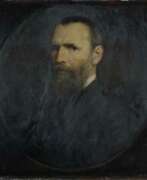

Edmund Harburger was a German artist of the last third of the nineteenth and early twentieth centuries. He is known as a painter, graphic artist, illustrator, and caricaturist.
Harburger became famous for more than 1,500 humorous drawings for the magazine Fliegende Blätter. He also created book illustrations and political cartoons. After living for two years in Venice, the artist practiced there copying the works of the old masters. His exhibitions were held in various European cities, including Paris, Berlin and Munich. His works are kept in museums in various countries, including the New Pinakothek in Munich and museums in Gdansk, Leipzig, Prague and other cities.
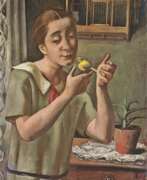

Wilhelm Heise was a German painter associated with the New Objectivity. He earned a living by painting clocks, for which he developed a meticulous technique. In 1925, he participated in the Neue Sachlichkeit (New Objectivity) exhibition in Mannheim which brought together many leading "post-expressionist" artists, including George Grosz, Otto Dix, Max Beckmann, and Georg Scholz. His painted self-portrait entitled Fading Spring is representative of his style. Heise won the Nuremberg Dürer Prize in 1937.
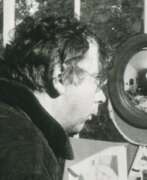

Horst Janssen was a German graphic artist, printmaker, poster and illustrator. He created many drawings, etchings, woodcuts, lithographs, and woodcuts.
There is a museum dedicated to his legacy in Horst Janssen's hometown of Oldenburg. His works are represented internationally in major museums.
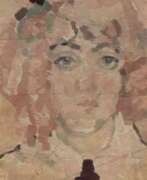

Vera Vladimirovna Khlebnikova (Russian: Вера Владимировна Хлебникова) was a Russian artist, born in 1891, who specialized in painting and graphic arts. She is celebrated for her vibrant use of color and her distinctive illustrative style, which notably contributed to the visual interpretation of her brother Velimir Khlebnikov's literary works. Her artistic education included studying under Konstantin Yuon and Ivan Dudin in Moscow, and later at the Drawing School in St. Petersburg under Yakov Zielinski. Khlebnikova's early years were marked by her involvement in various exhibitions and her participation in the artistic community of Astrakhan, where she also engaged in political education and teaching.
Khlebnikova's repertoire spanned landscapes, still lifes, and voluminous graphic works. Her pieces, such as the vivid illustrations for her brother's drama "Sysini" and poems like "Vila and the Goblin" and "Wild Melancholy", showcase her exceptional "gift of color" and narrative depth. Despite her critical role in early 20th-century Russian art, detailed information about her works and their locations in museums or galleries is scarce. However, her contributions to Russian Impressionism and Modern art have been recognized in auctions, with her works fetching varied prices, reflecting her artistic significance.
For collectors and experts in art and antiques, Vera Vladimirovna Khlebnikova remains a figure of intrigue, representing the intertwining of familial genius and individual artistic exploration. Her legacy is a testament to the vibrant cultural milieu of early 20th-century Russia and its influence on the broader narrative of modern art.
To stay updated on new discoveries, sales, and auction events related to Vera Vladimirovna Khlebnikova's work, signing up for updates is advisable. This ensures that enthusiasts and collectors are always informed about the latest opportunities to engage with her artistry.
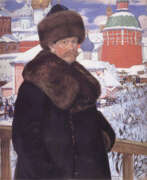

Boris Mikhailovich Kustodiev (Russian: Бори́с Миха́йлович Кусто́диев) was a distinguished Russian artist and painter, celebrated for his vivid portrayal of the Russian culture and way of life. Born in Astrakhan in 1878, Kustodiev's artistic journey began at a young age, leading him to study under the renowned Ilya Repin at the Imperial Academy of Arts. His works, characterized by their rich color palette and intricate detail, capture the essence of Russia's social and cultural fabric during the early 20th century.
Kustodiev's art is notable for its depiction of Russian peasantry, landscapes, and bourgeois celebrations, embodying the spirit and vibrancy of Russian folklore and traditions. His paintings such as "The Merchant's Wife" and "Maslenitsa" are celebrated for their lush visual storytelling and are housed in prestigious museums, including the State Russian Museum in St. Petersburg. These works reflect Kustodiev's fascination with the Russian merchant class and traditional festive gatherings, showcasing his skill in blending realism with a folkloric charm.
Beyond painting, Kustodiev's contributions to theatre and book illustration further demonstrate his versatile talent and deep connection to Russian cultural heritage. Despite facing personal challenges, including a debilitating illness that confined him to a wheelchair, Kustodiev's prolific output continued unabated, leaving behind a legacy that continues to enchant and inspire. His ability to capture the beauty and complexity of Russian life has made his work invaluable to collectors and experts in art and antiques alike.
For those intrigued by the rich tapestry of Russian culture and history as depicted through the lens of one of its most celebrated artists, we invite you to sign up for updates. Stay informed on new product sales and auction events related to the illustrious works of Boris Mikhailovich Kustodiev. This subscription is your gateway to the vibrant world of Russian art, offering exclusive insights and opportunities for collectors and enthusiasts.
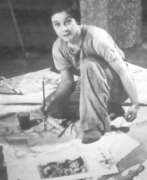

Pegi Nicol MacLeod is a Canadian and American watercolour artist.
She studied painting at the Montreal School of Fine Arts and was a member of the Canadian Watercolour Society and the Canadian Group of Artists. The influence of the Group of Seven is evident in MacLeod's early landscapes, and she later began painting in a more expressive style.
Pegi Nicol MacLeod's watercolours and oil paintings are sinuous lines and dynamic color. The artist took subjects from the world around her - children, portraits, gardens, crowded city streets. After the end of World War II, MacLeod achieved her success. Her "Manhattan Cycle" quickly gained a wide audience in Canada, moving from the National Gallery to a nationwide tour.
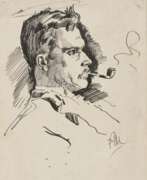

Francis Prout Mahony, also known as Frank Mahony was an Australian painter, watercolorist and illustrator. Mahony became known for his excellent drawings of horses. He worked for The Antipodean, The Sydney Mail and the Australian Town and Country Journal. In addition to his periodical work, he illustrated numerous books, including Where the Dead Men Lie, and Other Poems by Barcroft Boake, While the Billy Boils by Henry Lawson and Dot and the Kangaroo, a children's book by Ethel Pedley. His oils were moderately successful. He is best remembered as a capable painter of animals and is represented in the Sydney, Hobart and Wanganui, New Zealand galleries.
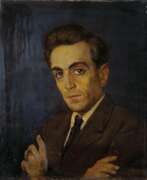

Ruvim (Ilya) Mazel was a Russian and Soviet artist, illustrator and teacher. He studied painting under Nikolai Roerich and Alexander Benois.
In the "European" period of his life Mazel was strongly influenced by Munich Art Nouveau, and after moving to Ashgabat, Oriental motifs became the main motifs in the artist's paintings.
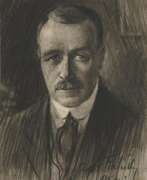

Benjamin Edwin Minns was an Australian artist, recognised as one of Australia's foremost watercolourists. Minns obtained his first job at the Illustrated Sydney News; Minns also drew for the Sydney Mail and regularly contributed to The Bulletin. From 1895 to 1915 Minns worked in England, contributing to St Paul's Magazine, Punch, The Strand Magazine, the Bystander and other publications as well as sending drawings to The Bulletin. Minns was a founder in 1924 and inaugural president (until 1937) of the Australian Watercolour Institute.


Hanna Nagel, a German illustrator, painter, and draughtswoman, was recognized for her critical examination of gender roles and societal norms, particularly focusing on the experiences and representation of women. Hanna Nagel's early works were marked by a patriarchal critique, delving into issues of discrimination and societal conditions faced by women. She studied at the Badische Landeskunstschule Karlsruhe and later at the Vereinigte Staatsschulen für Freie und Angewandte Kunst in Berlin under the guidance of Emil Orlik.
Hanna Nagel's art often featured the female figure, exploring themes of dependency, power dynamics, and the complex roles of women in society. Her style evolved from sharp caricature to a more nuanced and dreamlike representation, with works like "Woman in Blue Dress" exhibited at The Metropolitan Museum of Art reflecting this transition. Throughout her career, she also contributed significantly to book illustration, adding depth to literary works with her expressive visuals.
Hanna Nagel's legacy is preserved through her contributions to German art and culture, with her works displayed in exhibitions and held in collections worldwide. She remains a pivotal figure in the exploration of feminist themes in art, offering a unique perspective on the interplay between gender, identity, and societal expectations.
For those interested in exploring the depth and range of Hanna Nagel's work, consider signing up for updates on exhibitions, sales, and auctions related to her artwork. This subscription will provide insights into available pieces and events celebrating her contributions to art and culture.
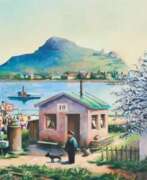

Otto Nückel was a German painter, graphic designer, illustrator and cartoonist. He is best known as one of the 20th century's pioneer wordless novelists, along with Frans Masereel and Lynd Ward. He developed his skill in drawing and painting, joining the artists' association, the Munich Sezession, and developing an interest in relief printing. Because of the scarcity of wood, Nückel made engravings for relief prints on lead plates. A pioneer in lead engraving, Nückel developed an accomplished mastery of this medium, distinguished by ample use of the multiple-line tool. Much of Nückel's work favors dark comedy, profound irony and an often scathing sarcasm.
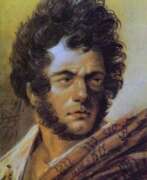

Aleksander Orłowski (Russian: Александр Осипович Орловский), a renowned Polish painter and sketch artist, was born on March 9, 1777, in Warsaw, within the Polish-Lithuanian Commonwealth. His journey into the arts began under challenging circumstances; he was the son of a tavern-keeper and his family was not wealthy. His early promise in art was nurtured by noble patron Izabela Czartoryska, who financed his initial education under the guidance of artist Jan Piotr Norblin.
Orłowski's artistic journey intersected with his military service during the Kościuszko Uprising, a major revolt against Imperial Russia and Prussia in 1794. This period of conflict significantly influenced his later works, which often depicted military scenes and the daily life of soldiers. After the partitions of Poland, Orłowski moved to Saint Petersburg in 1802, where he became a seminal figure in the development of lithography in the Russian Empire.
His oeuvre includes a wide array of subjects, from battle scenes to cultural depictions of everyday life in both Poland and Russia. Notable works such as "Battle Scene" and "Cossack Fighting Off A Tiger" showcase his skill in capturing dynamic movement and drama. His works are preserved in esteemed institutions such as The Russian Museum and The Tretyakov Gallery, highlighting their historical and artistic value.
Orłowski's impact extended beyond the canvas; he was also mentioned in literary works by notable authors like Adam Mickiewicz and Alexander Pushkin, which underscores his cultural significance in the 19th century.
For collectors and experts in art and antiques, Aleksander Orłowski's works represent a crucial segment of Eastern European art history. To stay informed about new discoveries or auction events related to his works, consider subscribing for updates. This subscription ensures you receive timely information tailored to your interests, directly relating to new sales and significant events around Orłowski's art.


Arthur Rackham was an English book illustrator. He is recognised as one of the leading figures during the Golden Age of British book illustration. His work is noted for its robust pen and ink drawings, which were combined with the use of watercolour, a technique he developed due to his background as a journalistic illustrator.


Carl Friedrich Sandhaas was a German painter and draftsman. Sandhaas preferred to work as a landscape and portrait painter; he also worked as an illustrator of literary and mythological works. As a draftsman and watercolorist, he is one of the most important representatives of late romanticism in Baden.
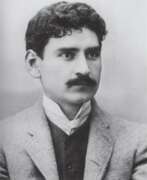

Martiros Saryan (Russian: Мартирос Сергеевич Сарьян), an Armenian painter, left an indelible mark on the art world with his vibrant landscapes, still lifes, and portraits that radiate the essence of Armenian culture and nature. Born in Nakhichevan-on-Don in 1880, Saryan's journey into the world of art was influenced by his studies at the Moscow School of Arts and notable artists like Paul Gauguin and Henri Matisse. His work is celebrated for its bright, bold use of color and a unique ability to capture the beauty of the Armenian landscape.
Saryan's artistic odyssey was marked by extensive travels across Turkey, Egypt, and Iran between 1910 and 1913, which enriched his palette and broadened his thematic scope. These experiences, coupled with his later contributions as a designer of the Armenian SSR's coat of arms and a theatre curtain, underscore his profound impact on Armenian national identity. Despite the challenges of the 1930s, Saryan's commitment to landscape and portrait painting never wavered, earning him prestigious awards and recognition within the USSR Art Academy and the Armenian Academy of Sciences.
Today, Saryan's legacy is preserved at the Martiros Saryan House Museum in Yerevan, where visitors can immerse themselves in his life and art. The museum showcases a wealth of his works, including renowned paintings like "Armenia" and "The Ararat Valley," offering a window into the culture and history of Armenia through Saryan's eyes.
For collectors and experts in art and antiques, the vibrancy and depth of Saryan's work offer a unique insight into Armenian heritage. Sign up for updates on new product sales and auction events related to Martiros Saryan, and explore the rich tapestry of Armenian art as seen through the masterful strokes of one of its greatest painters.
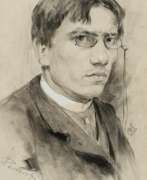

Paul Alfred Schroeter or Schröter was a German painter and etcher. He became a member of the Munich Secession and participated in their first exhibition of 1894. From 1898 to 1901, he lived in Hamburg where he became a co-founder of the Hamburgischer Künstlerklub. Many of his works are in private collections. Most of the others were destroyed during World War II.


Everett Shinn is an American impressionist painter. From the age of 17 he worked as a staff artist for the Philadelphia Press. Moving to New York City in 1897, he soon became known as one of the talented urban realist painters, depicting modern urban life.
In 1899 Shinn began working as an illustrator for Ainslee's Magazine. For a time he worked in pastel. A trip to Europe in 1900 greatly influenced his work - the artist was fascinated by Impressionism, which was especially evident in his works on the theater. Shinn's best works realistically depict American urban life in the early years of the twentieth century.


Lucien Simon was a French painter known for his realistic portraits, landscapes and genre scenes of fishermen and peasants. He studied at the Ecole Nationale Supérieure des Beaux-Arts in Paris and has exhibited in Paris and other cities in France.
Lucien Simon often portrayed the life of ordinary people, trying to convey their naturalness and simplicity. In 1934, he was awarded the Legion of Honour for services to art.
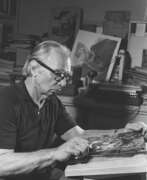

Lynd Kendall Ward was an American artist and novelist, known for his series of wordless novels using wood engraving, and his illustrations for juvenile and adult books. His wordless novels have influenced the development of the graphic novel. Although strongly associated with his wood engravings, he also worked in watercolor, oil, brush and ink, lithography and mezzotint. His best-known books are Gods' Man and his Caldecott-winning children's story, The Biggest Bear.
